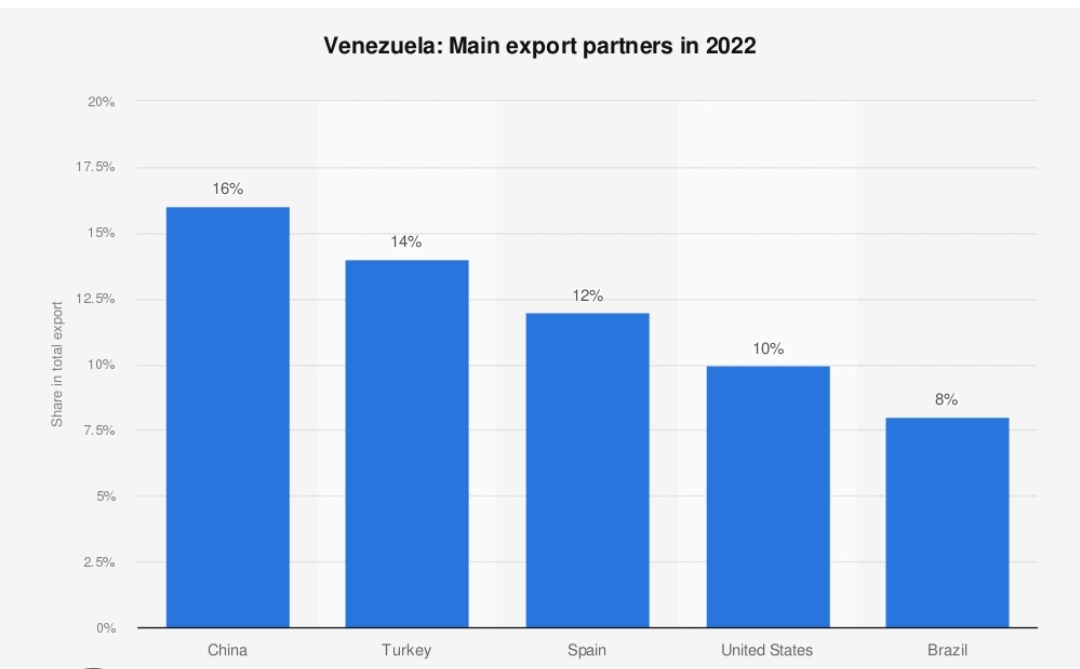
Venezuela’s Main Trading Partners
Venezuela, an oil-rich country in South America, has a complex trade landscape influenced by its economic policies, political relationships, and natural resources. Historically, the country’s economy has been heavily dependent on crude oil exports, making trade ties crucial for its financial stability. Below is an overview of Venezuela’s key trading partners, both in exports and imports.
—
Main Export Partners
Venezuela’s economy relies heavily on oil exports, which account for over 90% of its total export revenue. The main destinations for these exports include:
1. China
China is one of Venezuela’s top trading partners, particularly for oil exports. Due to U.S. sanctions, Venezuela has increasingly relied on China to sell its crude oil. China often imports Venezuelan oil through indirect channels, sometimes blending it with other types of crude to avoid restrictions. In return, China provides Venezuela with technology, machinery, and consumer goods.
2. India
India has been a major buyer of Venezuelan crude oil, though its purchases have fluctuated due to international sanctions. Indian refineries, especially private ones, have processed Venezuelan heavy crude. However, recent geopolitical changes and U.S. pressures have affected trade volumes.
3. Turkey
Turkey has emerged as a strategic trading partner for Venezuela, especially in the gold trade. The Venezuelan government has sent gold to Turkey in exchange for food, medicine, and essential goods, helping Venezuela mitigate shortages caused by economic sanctions.
4. Russia
Russia is another crucial ally of Venezuela, providing support in oil exports and infrastructure development. Russian energy companies have been involved in Venezuela’s oil sector, helping to bypass sanctions. Additionally, Russia supplies Venezuela with military equipment and technology.
5. Spain
Spain has maintained trade relations with Venezuela, particularly in non-oil sectors. Spanish companies export pharmaceuticals, food products, and industrial goods to Venezuela. Political tensions sometimes affect the relationship, but trade continues in key areas.
—
Main Import Partners
Due to Venezuela’s economic challenges, the country imports many essential goods, including food, medicine, and industrial equipment. The key sources of these imports are:
1. China
China is not only a major buyer of Venezuelan oil but also a top supplier of goods. It exports automobiles, electronics, heavy machinery, and consumer goods to Venezuela. Chinese investments in infrastructure and telecommunications have also strengthened the economic relationship.
2. Brazil
Venezuela imports food products, agricultural goods, and industrial equipment from Brazil. Despite political differences, trade between the two countries remains steady, particularly in sectors like livestock and soybeans.
3. Mexico
Mexico has played a role in supplying Venezuela with refined petroleum products, as well as food and consumer goods. Some of these transactions have been controversial due to concerns over sanction violations.
4. Iran
Iran has become a key partner in energy cooperation with Venezuela, supplying fuel, refinery parts, and technical expertise. The two countries have developed a barter system where Venezuela provides oil in exchange for refined gasoline and other products.
5. Colombia
Despite political tensions, Venezuela still trades with Colombia, primarily in food, clothing, and industrial supplies. Border trade is significant, especially for Venezuelans who rely on Colombian imports for daily necessities.
—
Conclusion
Venezuela’s trade is heavily shaped by its oil-based economy, international sanctions, and political alliances. China, India, and Russia dominate its export market, particularly for crude oil. On the import side, China, Brazil, and Mexico provide essential goods, helping Venezuela sustain its economy despite economic hardships. Moving forward, Venezuela’s trade dynamics will continue evolving, influenced by global oil demand, geopolitical shifts, and domestic economic policies.




Leave a Reply